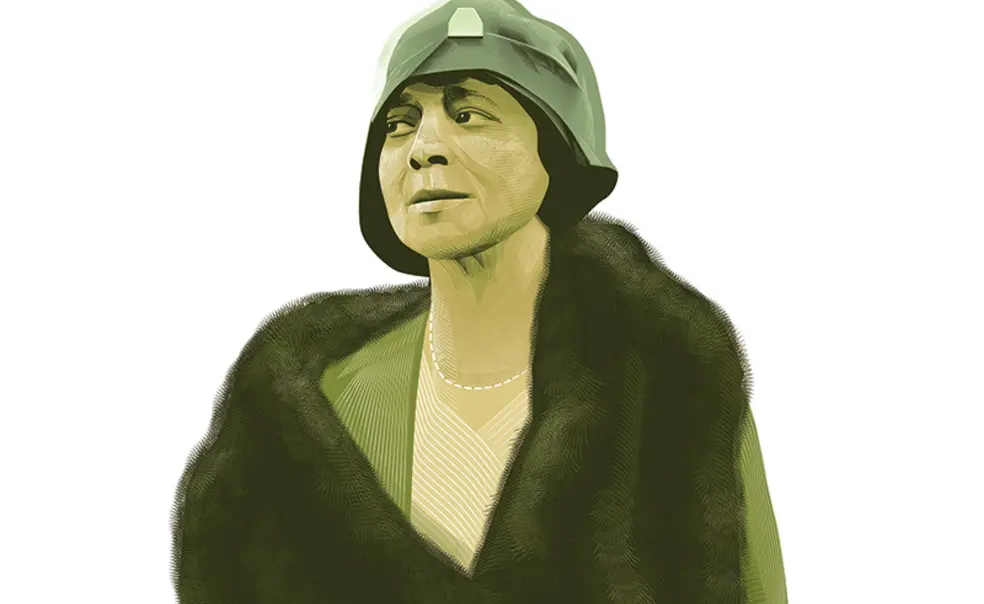This Librarian Lived Under a False Identity, and Did It With Class
Princeton Portrait: Belle da Costa Greene, 1879-1950
To be a rare books librarian and to live in absolute Jazz Age elegance are both sensible fantasies, but not ones that a sensible imagination would normally bring together. It’s too much, too fabulous, to happen all at once: the books, the galas, the fringed silk dresses, the velvet bindings, the Art Deco. For Belle da Costa Greene, however, this was simply her life. The personal librarian for J.P. Morgan, Greene set the standards for manuscript collecting in the United States at a time when American money meant something it never had before. She became the first director of the Morgan Library in New York City.
And she did all this while living under a false identity.
Greene got her start at Princeton. When she began work there as a librarian in 1901, she gave her birth year as 1883 and her name as Belle Greene. Over the years, she would embellish her name and tell anyone curious that her paternal line was Portuguese and her maternal line was Dutch, a family of Virginia worthies. In fact, her parents were African American and the descendants of slaves; her father, Richard Theodore Greener, was the first Black Harvard graduate. She grew up in modest but genteel circumstances in Washington, D.C., and Manhattan. By the time of the state census of 1900, her mother, who had pale skin, had made the choice to start representing herself and her children as Portuguese. In that segregated age, this change of identity — which included a new surname — was a secret of the highest order.
New York City’s high society loved her. She attended galas, balls, art exhibition openings, in demand for her sparkling erudition and bohemian flair.
That new identity unlocked, for young Belle, a door to an otherwise impossible dream: to become a librarian. “I knew definitely by the time I was 12 years old that I wanted to work with rare books,” she later told The New York Sun. “I loved them even then, the sight of them, the wonderful feel of them, the romance and the thrill of them.”
In 1906, Morgan hired Greene as his personal librarian on the advice of his nephew, Junius Morgan 1888 *1896, who lived in Princeton and was a benefactor of the University’s library. The elder Morgan had just built a library in Manhattan to hold his personal collection. (The library’s construction cost $1.2 million, or more than $43 million today.)
Greene turned his collection into a wonder of the age. She sorted his books, which were an unsorted mountain of treasures, and gave them catalog numbers.
She traveled abroad to inspect foreign collections, negotiated with booksellers, and handled payments, while making choices about what new items to acquire: Caxtons, First Folios, manuscripts of works by Chaucer, books of Byzantine illuminations, medieval gospels in treasure bindings.
New York City’s high society loved her. She attended galas, balls, art exhibition openings, in demand for her sparkling erudition and bohemian flair. She had free use of J.P. Morgan’s box at the Met. The painter Henri Matisse drew her portraits. She stole so many hearts with her wit and free-spirited elegance that when a rumor went around that she had accepted a marriage proposal, newspapers published her denial: “Miss Belle da Costa Greene, librarian of the J. Pierpont Morgan Library, is still heartwhole and fancy free.”
Would she have married if not for her secret? The answer is unknowable, but she lived a good life, a bookish and beautiful life, and she got it at the price of a lie far smaller than the lie that she wouldn’t have deserved it under her real identity. And she never forgot her start at Princeton, using her glamor and influence to support the University’s library. In 1934, for example, the Friends of the Princeton Library, of which Greene was vice chair, advertised a “mystery dinner” to be held as a fundraiser at the Plaza Hotel. The Friends promised “a surprise in store” for those who bought tickets. What that surprise was is lost to history, but given the excesses of the gilded class, anything was possible short of a soirée musicale starring Gatsby and Daisy themselves.












No responses yet